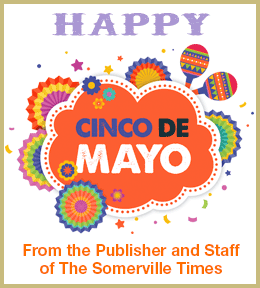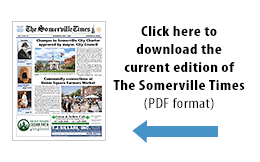(The opinions and views expressed in the commentaries and letters to the Editor of The Somerville Times belong solely to the authors and do not reflect the views or opinions of The Somerville Times, its staff or publishers.)

By Mayor Joseph A. Curtatone
It may not feel like spring outside, but inside City Hall we have big open space and tree canopy plans that are getting ready to blossom. In a city like Somerville, green space doesn’t happen by accident. Not only are we the most densely populated city in New England, but we’re a former industrial city and we’ve somehow managed to cram 105 miles of roadways inside 4.1 square miles. Now we have community organizations working with talented people at City Hall to constantly push for a greener future here in Somerville.
We’ve been making progress. We’ve renovated 46 of our 61 city parks during the past 15 years. We now have Baxter Park along the Mystic in a spot that used to be a post-industrial wasteland. 98% of our residents now live within walking distance of a park. We re-opened Lincoln Park last year and it’s a true city commons. We have community gardens, dog parks and some of the best playgrounds you’ll find anywhere. But there is plenty more to do.
Currently we’re working on Prospect Hill and the Allen Street Playground. The State is preparing to give Foss Park a much-needed update. We recently completed Winter Hill and Argenziano playgrounds, and the Healey, Brown, West Somerville Neighborhood School, and portions of the East Somerville Community School yard and Capuano field are next. The new high school will have an actual on-site playing field, which sounds a little like science fiction to those of us who graduated from Somerville High. Yet it’s a key part of that project. This year, we will also submit a funding request for the Somerville ArtFarm to move this project forward as a groundbreaking blend of arts and open space on a site that used to house an incinerator that spewed filth into our local air.
The work itself can be expensive. Since 2012 we’ve added 15 acres of new open space at a cost of $2.3M per acre. Like I said, green space doesn’t just happen by accident in Somerville. It takes careful deliberation and community input to get it right.
So, to keep the momentum going, we just founded the Open Space Acquisition Task Force. In 2019, they will get to work identifying every opportunity to be greener. People need to grow food, play sports, climb, play, slide and relax. Wildlife needs habitats. Pollinators need proper plant species. Our community needs stormwater management. Some people say cities can’t provide all of that. Our approach to open space is proving those people wrong.
A key part of the transformation of our former industrial sections of the city will be adding new open spaces. We’re in the early stages of siting and designing a new park in Union Square. We’ll be reclaiming pieces of Boynton Yards, Brickbottom and the Inner Belt in the future. Someday we’re going to take down the McGrath overpass and turn it into a street-level boulevard, lined with greenery and trees. Over the next decade, the amount of green and public spaces in the eastern portion of our city is going to increase exponentially.
We’re also putting increased focus on our tree canopy. Make no mistake, last year was a difficult one for trees in our city. We’re battling the emerald ash borer beetle. The MBTA’s Green Line extension required them to remove of a large number of trees from the existing rail bed. Our Somerville High School project likewise needed a number of tree removals. There was no getting around it.
However, together with the City Council, we are continuing to grow and protect our tree canopy through every part of Somerville. Their approval of another urban forestry position means that in 2019 we will double our capacity to keep our tree canopy growing and our existing trees healthy.
We’ve already intensified our efforts. The past few years, we planted more than 300 new trees annually. That’s more than four times the pace of previous years, and we will only accelerate our work from here as we complete our new Urban Forest Management Plan in 2019. Among our top priorities: We’ll be identifying the areas with the lowest tree cover and planting there in order to reduce ambient temperatures during the summer months and lower energy costs.
We’ll also be making sure the cover around our schools, senior centers and recreational areas is what it needs to be. Some of this is tied in with new parks. We have 150 new trees in Lincoln Park and we’ll have 40 net new trees on Prospect Hill when that project is completed. Also, as we’ve been doing for years, we’re going to be making sure the neighborhoods with the least tree cover get prioritized for new plantings. There are tangible quality of life gains that come with living in tree-lined neighborhoods. We want that for everyone.
Meanwhile, we want to ensure the Green Line rail corridor is as green as the trains. In 2019, our staff will continue to work with the MBTA to ensure the corridor is planted and reforested to the greatest extent possible. Ideally, when you’re riding the train or walking or biking along the Community Path extension, you should be looking at trees and greenery—and wildlife should be able to find habitat there.
And we’re now updating our SomerVision community plan. So, if you’ve got creative ideas about how we can add to our open spaces and expand our tree canopy, that’s an ideal place to get involved. This is nothing less than a community transformation we’re attempting to engineer. Your time and your talent can go a long way toward making that happen.
















Reader Comments